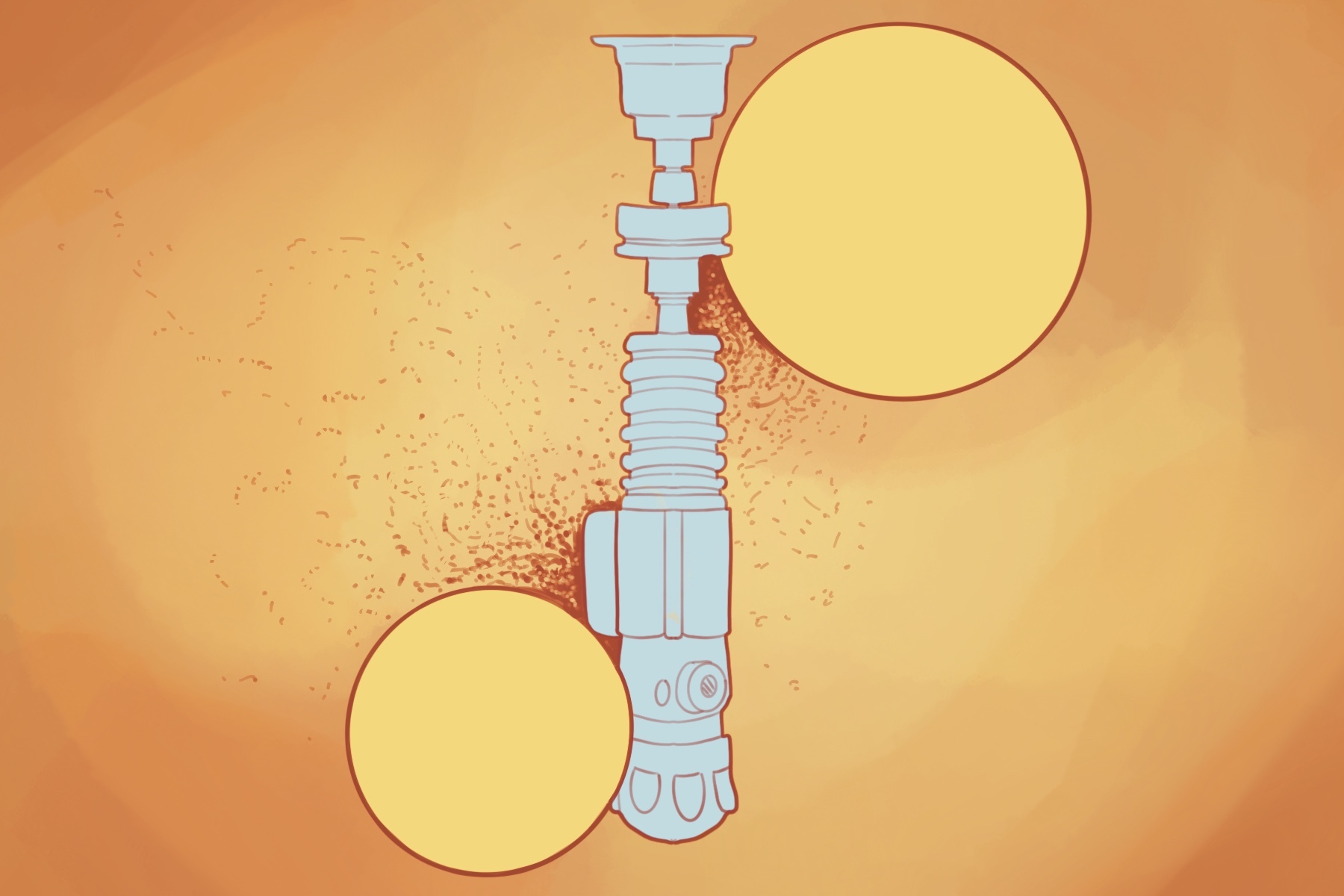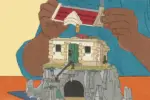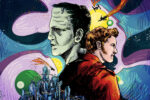The final episode of “Obi-Wan Kenobi,” which aired on June 22, is a great conclusion to the show. It ties together all the loose ends while putting on a beautiful and meaningful display. However, the episode is not without its flaws, as it left many fans wanting more. Today, we will break down everything that worked in the final episode of “Obi-Wan Kenobi” and everything that didn’t. Obvious spoilers for “Obi-Wan Kenobi” are ahead, so read at your own risk.
One thing the finale did right was that it provided a satisfying conclusion to Obi-Wan Kenobi’s character arc. Throughout the series, Obi-Wan struggles to let go of his grief following the events of “Revenge of the Sith” (2005), during which he left Anakin to die on the planet Mustafar. Obi-Wan, who watched Anakin fall deeper and deeper into the Dark Side, feels that he is at fault for Anakin’s transformation into Darth Vader, and, by harboring this guilt, Obi-Wan has lost his connection to the Force. In Episode 3, Obi-Wan meets Darth Vader for the first time since their epic battle on Mustafar, but Obi-Wan is largely out of practice and rightfully terrified of his former padawan. Obi-Wan asks Darth Vader, “What have you become?” to which Darth Vader feeds into his fear and guilt, saying, “I am what you made me.”
During the final episode, however, Obi-Wan realizes he must face his guilt by fighting Darth Vader one last time even though he knows that it may be a suicide mission. It is his only chance to try and make things right. The battle begins, and although Obi-Wan seems to hold his own a little better than in their last encounter, Darth Vader still manages to gain the high ground on Obi-Wan. After blocking one of Obi-Wan’s attacks, Darth Vader traps him in a pit and pummels him with boulders, showing off his strength in the Dark Side. This seems to be the end for Obi-Wan, but he is strengthened by visions of Luke and Leia, which remind him that his purpose is to protect the future and not dwell on the past. Obi-Wan then breaks free from his trap and goes to fight Darth Vader once more, this time using clever lightsaber tricks that are similar to those that Anakin uses in the training flashbacks. Obi-Wan uses this as a final attempt to bring out his former padawan, but after he doesn’t get his desired response, Obi-Wan reveals his restored strength in the Force and defeats Darth Vader.
After the dust has settled, Darth Vader turns to Obi-Wan and reveals a broken mask through which Obi-Wan can see directly into his eye. It is at this moment that Obi-Wan finally gets the closure he needs, apologizing for the mistakes that led to Anakin becoming Darth Vader. However, Darth Vader responds to his former master with the heartbreaking line: “I am not your failure, Obi-Wan. You didn’t kill Anakin Skywalker. I did.” With this, Obi-Wan finally realizes that Anakin’s descent into the Dark Side was not his fault; it was Anakin’s. This too gives Obi-Wan the closure he needs to finally let go of the past so that he can better focus on the future.
This character arc could not have been played out better. Rather than giving the protagonist a mentor to train them up before the big fight — a cliché used in many movies, including within the “Star Wars” franchise — “Obi-Wan Kenobi” forces the protagonist to overcome their depressive state and battle the demons on their own. Obi-Wan needs no practice or physical training to overcome Darth Vader. Instead, he comes to terms with his guilt and faces it head-on, without even knowing whether it will amount to anything. The final battle between Obi-Wan and Darth Vader is more than just an epic fight scene; it is a satisfying close to the story of Obi-Wan and his padawan.
“Obi-Wan Kenobi” did a great job tying everything together for its namesake protagonist, but what about Darth Vader? One opportunity “Obi-Wan Kenobi” really missed out on was diving deeper into Darth Vader’s psyche. Sure, we get to see his burning hatred for Obi-Wan, manifested in the persistent pursuit of his old master, but how much is Darth Vader really plagued by his master’s betrayal? How does it affect his daily life? And how exactly did Darth Vader kill Anakin Skywalker? These are all questions that could have been covered in a series of flashbacks or even cut scenes of Darth Vader contemplating his master and time as a padawan.
This would have made a nice parallel to Obi-Wan’s story. Obi-Wan struggles with the guilt of essentially “killing” Anakin, and Darth Vader feeds his anger by looking back on what made him Darth Vader. Many comic books cover this exact plot, including the final book in the “Darth Vader” series (2017) in which he goes to search for Padme’s soul and bring her back, only to discover that she, along with Anakin’s soul, are long gone. While the timelines may not have added up to reference this particular moment, a similar contemplation or flashback to his early years as Darth Vader may have fit in well with the show. While the show did a great job with Obi-Wan’s storyline, it missed a great opportunity to explore Darth Vader’s evolution.
Other things that worked well were the symbolism and cinematography, especially in the last fight scene with Obi-Wan and Darth Vader. The scene is filled with symbolic colors, references to other films and the masterful use of voices to push the plot of the story.
The most iconic symbol is Darth Vader’s mask. The mask is a terrifying symbol of the monster Anakin has become, and he uses it to hide the fact that he is still human underneath. The moment it is compromised, Darth Vader is vulnerable and weak. This is not a new concept. This scene actually mirrors a scene in Season 2 of the show “Rebels” (2015), where Ahsoka, Anakin’s old padawan, faces off with him and cracks his helmet in the same way as Obi-Wan. Only this time, the opening is on the left instead of the right. In both of these scenes, Dark Vader assures his attacker that Anakin is gone and that the person they see before them is nothing more than the corpse of the person they once knew. By placing the Jedi on either side of Darth Vader’s exposed face, the two are solidified as the only living remnants of his old self. They represent the light Darth Vader still needs to expel to truly become who he says he is. Both scenes are heartbreaking to watch, but they deliver the exact same message: Anakin is gone, so stop looking.
Ironically, there are actually two actors cast as Darth Vader — Hayden Christensen and James Earl Jones. Christensen, who portrayed Anakin in the prequels, plays the physical aspects of Darth Vader, while Jones, who voiced Darth Vader in the original trilogy, once again provides the famous deep voice of the antagonist. This genius move not only provides fan service for die-hard fans of the series, but it also serves as a symbol for Darth Vader himself. His body may be Anakin Skywalker, but his mind is Darth Vader.
This is beautifully displayed in the final battle after Obi-Wan breaks Darth Vader’s helmet. In this scene, the voices of both actors can be heard mixing with each other as he tries to explain to Obi-Wan that this is him. It symbolizes the hope Obi-Wan has in Anakin fading away. During this, the light from their lightsabers reflects off their faces and transitions from blue to red, again symbolizing Anakin’s descent into the Dark Side. The effort behind these scenes is overwhelmingly amazing, and the creators of this show obviously knew what they were doing. However, despite all the brilliant cinematography, storyline and symbolism, the show still comes off as empty. The question must be asked: Why did we really need it?
“Obi-Wan Kenobi” gives us a look into some of the events that happened in between “Revenge of the Sith” and “A New Hope“ (1977), and it gives us some insight into the struggles that Obi-Wan faced while trying to overcome his guilt. But, other than that, why? What meaningful information did we really learn from this show? At the end of the day, the plot resolves almost exactly as it began: Leia is back home, Obi-Wan returns to the desert, and Darth Vader returns to his throne and position under the Sith Lord. Other than Obi-Wan’s mindset, nothing seems to have changed.
This makes the show seem unimportant. Why would you need to watch it if it really only serves as filler content for the other movies? Of course, it technically being a prequel, the storyline does not have much room to diverge. However, adding more to the story, like providing a look into Darth Vader’s mind, would have made the show a lot more interesting and relevant.
Additionally, providing political drama and updating the audience about the war status could have helped. “Obi-Wan Kenobi” attempted this by introducing an underground organization that smuggles refugees away from the Empire, but this comes off as underwhelming. At the end of the day, “Obi-Wan Kenobi” is not a bad show, but it really doesn’t seem necessary.
“Obi-Wan Kenobi” is a wonderful show that delivers great writing and detailed cinematography. However, the show is not without its downfalls. The show missed opportunities that would have proved the show’s relevance among the other movies, and, in turn, left some viewers feeling lackluster about the show. Ultimately, the show succeeded in what it meant to do, but it missed an opportunity to do so much more.

















